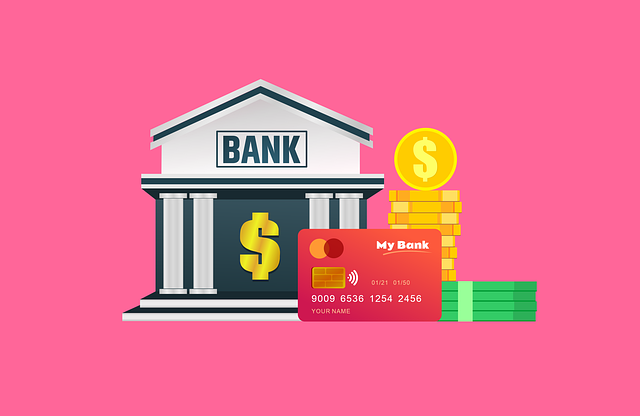Secured debt consolidation offers a strategic approach to managing high-interest debts using assets like real estate or vehicles. It simplifies repayments, lowers monthly payments, and provides personalized financial relief, especially during bankruptcy. Individuals can regain control of their finances, reduce costs, and take steps towards financial stability by bundling diverse debts into a single loan with a lower interest rate. This process involves assessing financial situations, researching lenders, preparing documentation, evaluating risks, and choosing repayment strategies like debt snowball or avalanche methods. Successful consolidation leads to rebuilding credit scores through timely bill payments, secured credit cards, low debt levels, and regular credit report reviews.
Struggling with multiple debts? Secured debt consolidation could be the solution you need. This comprehensive guide explores how secured loans can simplify your financial burden by combining and lowering interest rates on existing debts. We’ll delve into the benefits, various types of secured debt consolidation options, and crucial steps to secure a loan. Additionally, we’ll discuss effective repayment strategies post-consolidation and tips for rebuilding credit. Discover the power of secured debt consolidation options to regain control over your finances.
- Understanding Secured Debt Consolidation
- Benefits of Secured Loans for Consolidation
- Different Types of Secured Debt Consolidation Options
- Steps to Secure a Loan for Debt Consolidation
- Repayment Strategies After Consolidation
- Building Credit Post-Debt Consolidation
Understanding Secured Debt Consolidation

Secured debt consolidation is a strategic approach to managing and reducing debt by combining multiple high-interest debts into a single loan secured by an asset, typically real estate or a vehicle. This process offers individuals a chance to simplify their repayments and potentially lower monthly payments. By consolidating debts, borrowers can find personalized debt relief solutions that align with their financial goals. It’s not just about reducing credit card debt with consolidation loans; it’s also about regaining control over finances and stabilizing one’s economic standing.
Understanding this option is crucial when navigating bankruptcy proceedings as well. During these challenging times, secured debt consolidation can serve as a tool to restructure debts, offering a pathway towards financial stability. It allows individuals to make manageable payments while potentially avoiding the more severe consequences of bankruptcy. This strategy, thus, provides an effective way for borrowers to reduce their debt burden and move toward a brighter financial future.
Benefits of Secured Loans for Consolidation

Secured debt consolidation options can offer significant advantages for individuals struggling with multiple high-interest debts. One of the key benefits is the potential for lower interest rates, which can significantly reduce overall repayment costs. By bundling various debts into a single loan with a lower interest rate, borrowers can simplify their payment schedule and save money in the long run. This is particularly advantageous for those with credit card debt or loans spread across different financial institutions.
Additionally, secured debt consolidation options provide a structured approach to managing debt, especially for individuals dealing with a debt consolidation loan bad credit or facing challenges post-divorce settlement. These loans often require collateral, typically in the form of a home equity or vehicle title, which can give lenders greater assurance. This security can lead to more favorable loan terms and potentially faster approval processes, making it a viable solution for those seeking secure debt consolidation for bad credit.
Different Types of Secured Debt Consolidation Options

When considering secured debt consolidation options, individuals and businesses have several strategies to choose from, each tailored to their unique financial circumstances. Secured consolidation involves using an asset as collateral to obtain a new loan with a lower interest rate and more favorable terms, allowing for the repayment of multiple high-interest debts. This approach can significantly reduce monthly payments and the overall cost of debt.
For consumers, secured debt consolidation loans are often backed by their homes or vehicles. In Canada, this method is popular due to its ability to resolve debt collection harassment by offering a clear path to debt resolution. Similarly, small business owners can secure loans using business assets like equipment or inventory. Understanding how secured debt consolidation works in Canada and exploring these various options can empower individuals and businesses to take control of their finances and effectively manage debt.
Steps to Secure a Loan for Debt Consolidation

Securing a loan for debt consolidation is a structured process designed to help individuals gain control of their finances. The first step involves assessing your financial situation, understanding your debt obligations, and evaluating various secured debt consolidation options. This includes researching different lenders and comparing interest rates, repayment terms, and any associated fees. It’s crucial to opt for reputable non-profit debt consolidation services that align with your needs and offer transparent terms.
Once you’ve identified suitable secured debt consolidation options, prepare the necessary documentation. This typically includes proof of income, employment details, and identification documents. Lenders will assess your creditworthiness and may require collateral, such as a car or property, to secure the loan. It’s essential to carefully consider this step, as it involves risking an asset if you fail to repay the debt. Find low-cost debt consolidation services that provide flexible terms and reasonable rates to ensure a manageable repayment process.
Repayment Strategies After Consolidation

After securing a consolidation loan to manage your debts, the next crucial step is choosing an effective repayment strategy. One popular approach is the debt snowball method, where you prioritize paying off the smallest debts first while making minimum payments on others. This strategy provides quick wins and momentum, boosting motivation throughout the repayment process. Alternatively, the debt avalanche method involves targeting high-interest debts first, a strategy that saves more money in interest charges over time.
Selecting the right repayment plan depends on your financial situation and preferences. Non-profit debt consolidation services often offer guidance tailored to individual needs, making this a valuable resource during this transition. Even after settling a divorce or facing financial challenges, there are top-rated debt consolidation companies ready to assist. Remember, consistent and strategic repayments are key to overcoming secured debt consolidation options successfully.
Building Credit Post-Debt Consolidation

After successfully navigating secured debt consolidation options, rebuilding your credit score becomes a crucial step towards financial recovery. The first few months post-consolidation are vital in demonstrating responsible borrowing behavior to creditors. Start by paying all bills on time; this consistent payment history will gradually improve your credit standing. Consider applying for a secured credit card, which requires a deposit but can help establish or re-establish credit. Use it responsibly and pay the balance in full each month to show positive repayment habits.
Additionally, keeping debt levels low relative to available credit is beneficial. Aim to keep credit utilization below 30%. You can also regularly review your credit report for errors or inaccuracies that might be dragging down your score. Disputing these issues with the credit bureaus can help resolve them, leading to a higher credit rating. Remember, while consolidation offers a fresh start, consistent financial discipline is key to resolving debt collection harassment and maintaining positive credit health, especially during and after divorce settlements.
Secured debt consolidation offers a strategic path towards financial freedom by streamlining multiple high-interest debts into a single, manageable loan. By leveraging an asset as collateral, individuals can access more favorable terms and potentially lower interest rates, significantly reducing their overall debt burden. This article has explored the fundamentals of secured debt consolidation, its advantages, various types available, the application process, post-consolidation repayment strategies, and the positive impact on credit scores. With the right approach and selection of secured debt consolidation options, individuals can effectively navigate their debts and secure a brighter financial future.
